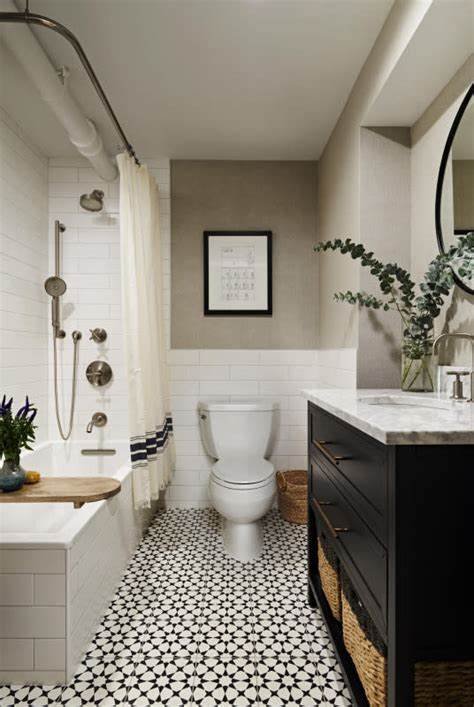Bathroom remodeling projects offer a canvas for creativity and personalization, and one of the most impactful design elements is tile. Whether it’s for the floors or walls, the right tile pattern can transform the look and feel of your bathroom, adding visual interest and enhancing the overall aesthetic. However, with a multitude of tile patterns to choose from, navigating the options can be overwhelming. In this comprehensive guide, we’ll demystify tile patterns for bathroom floors and walls, providing you with the knowledge and inspiration you need to make informed design decisions for your next remodeling project.
Understanding Tile Patterns
Tile patterns refer to the arrangement and layout of tiles on a surface. Different patterns can create various visual effects, from adding texture and dimension to making a space appear larger or more cohesive. When selecting a tile pattern for your bathroom, consider factors such as the size and shape of the tiles, the layout of the room, and your personal design preferences.
Popular Tile Patterns for Bathroom Floors
Straight Lay
The straight lay pattern, also known as the grid or stack bond pattern, is one of the most common and straightforward tile layouts. In this pattern, tiles are laid in a grid-like formation with each tile aligned with the ones next to it. The straight lay pattern is versatile and works well with both large and small tiles, making it suitable for bathrooms of all sizes and styles.
Diagonal
The diagonal pattern adds visual interest and movement to the bathroom floor by laying tiles at a 45-degree angle to the walls. This pattern creates a dynamic and modern look, making it an excellent choice for contemporary or eclectic bathroom designs. Diagonal tile patterns can visually expand the space and draw the eye towards focal points such as the vanity or bathtub.
Herringbone
The herringbone pattern is characterized by tiles arranged in a zigzag formation, creating a distinctive V-shaped pattern. This pattern adds texture and depth to the bathroom floor, making it a popular choice for creating visual impact in small or narrow spaces. Herringbone tile patterns can be achieved with rectangular tiles and are often used to create a classic or vintage-inspired look in the bathroom.
Popular Tile Patterns for Bathroom Walls
Subway
The subway tile pattern is a timeless classic that originated from the subway stations of the early 20th century. In this pattern, rectangular tiles are laid in a staggered, brick-like formation, with each tile offset from the one above and below it. Subway tile patterns are versatile and can be used in various orientations, including horizontal, vertical, or diagonal, to create different visual effects.
Mosaic
Mosaic tile patterns consist of small tiles, typically measuring less than 2 inches in size, arranged in intricate designs or patterns. Mosaic tiles offer endless design possibilities, from geometric shapes and floral motifs to abstract patterns and intricate mosaics. Mosaic tile patterns are often used as accent walls or decorative features in the bathroom, adding personality and charm to the space.
Stacked
The stacked tile pattern, also known as the straight lay or grid pattern, is a simple yet modern option for bathroom walls. In this pattern, tiles are stacked vertically or horizontally in a straight line, creating a clean and minimalist look. Stacked tile patterns are popular in contemporary and industrial-style bathrooms, where simplicity and symmetry are desired.
Choosing the Right Tile Pattern for Your Bathroom
When selecting a tile pattern for your bathroom, consider the overall style and aesthetic you want to achieve, as well as practical considerations such as maintenance and durability. Experiment with different patterns and layouts to find the perfect balance of form and function for your space. Remember that the right tile pattern can elevate the design of your bathroom and create a beautiful and functional space you’ll love for years to come.
Conclusion
In conclusion, tile patterns play a crucial role in the design and functionality of bathroom remodeling projects. By understanding the various tile patterns available for bathroom floors and walls and their respective benefits and aesthetics, you can make informed design decisions that enhance the overall look and feel of your space. Whether you opt for a classic subway pattern, a modern herringbone layout, or a creative mosaic design, the right tile pattern can transform your bathroom into a stylish and inviting retreat.


